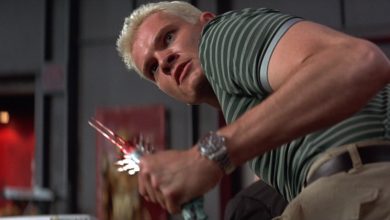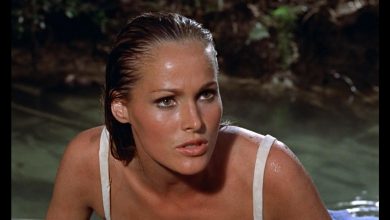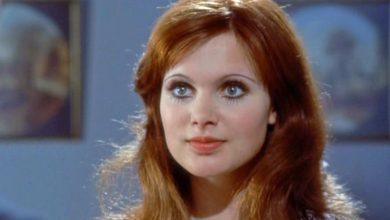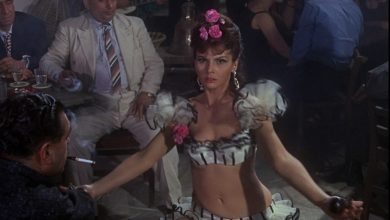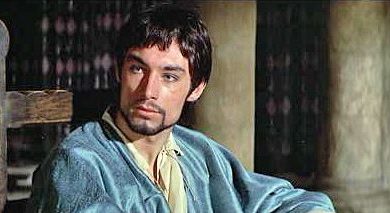why Margot Robbie can strongly be the next Bond girl
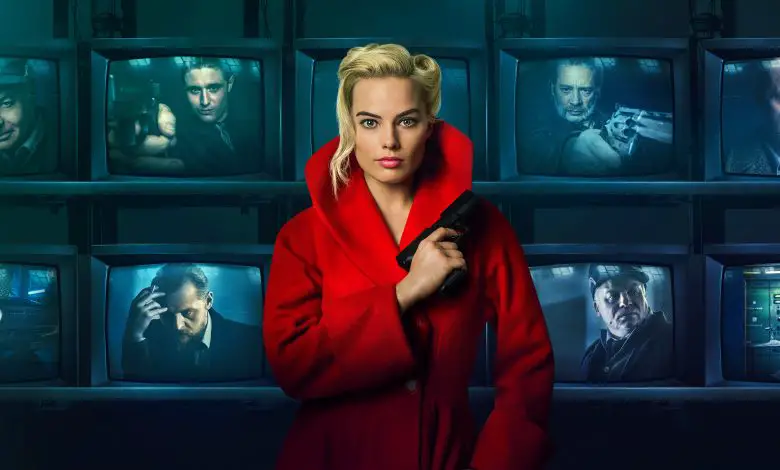
The discussion surrounding the portrayal of women in film has been a long-standing and contentious one, gaining even more relevance in recent years with the rise of movements advocating for better representation and treatment of women in the industry. One such example that often comes under scrutiny is the role of the “Bond girl” in the James Bond franchise. Despite the iconic status of these roles, they’ve also been criticized for their often stereotypical and one-dimensional portrayal of women. This brings us to the question at hand: What does it mean for a rising star like Margot Robbie to potentially step into the shoes of a “Bond girl?
Margot Robbie, an actress known for her stellar performances in films like “The Wolf of Wall Street” and “I, Tonya”, has shown her versatility and talent in a range of roles. However, much like other actresses in Hollywood, her roles, especially in blockbuster films, often revolve around her relationships with male characters. The prospect of Robbie joining the Bond franchise not only raises questions about her career trajectory but also shines a light on the larger issue of gender representation in film.
Key Takeaways
- The “Bond girl” roles in the James Bond franchise often embody stereotypical and sexualized portrayals of women, which has drawn criticism.
- Margot Robbie, despite her impressive acting repertoire, has had roles that are largely defined by her relationships with male characters.
- The prospect of Robbie joining the Bond franchise invites discussion about the kinds of roles she is being offered and the broader issues of gender representation in film.
- While the portrayal of women in film has improved over the years, there is still a significant need for progress, with the Bond franchise being no exception.
Perhaps we should be considering why Robbie would even contemplate taking on the role to begin with. In this day and age, it’s puzzling why being a “Bond girl” is still perceived as the pinnacle of achievement for rising female stars.
The historic record of the Bond franchise hasn’t exactly been stellar when it comes to crafting empowered female characters to accompany MI6’s top agent. Among the Bond girls of the modern era, Eva Green’s multi-dimensional Vesper Lynd in Casino Royale stands out as a significant character with lasting influence on 007’s psyche. In Quantum of Solace, the Bond screenwriters attempted to introduce a different kind of partner for Bond in Olga Kurylenko’s Camille Montes, but she has largely been forgotten in a rather lackluster entry. Léa Seydoux’s performance in Spectre as the demure, vulnerable Dr Madeleine Swann was excellent, but this character harks back to the typical Bond girl – perpetually in love with Bond and frequently used as a mere chess piece in the larger game between 007 and his archenemies.
Robbie is no stranger to these types of roles. In fact, she has often portrayed women whose identities are predominantly defined by their relationships with men in her major blockbuster roles. In The Legend of Tarzan, she played Jane to Alexander Skarsgård’s Tarzan; in The Wolf of Wall Street, she was Leonardo DiCaprio’s trophy wife turned avenger, Naomi Lapaglia; and in Suicide Squad, she embodied Harley Quinn, the devoted lover and accomplice to Gotham’s Joker. In the trailers, Quinn is even seen wearing a jacket that declares: “Property of The Joker”.
This isn’t to disparage Robbie, as these roles are solid choices for a young Hollywood actor. Quinn’s obsession with the Joker is a compelling study in psychological disturbance, a derivative of a kind of Stockholm syndrome. Lapaglia, despite initially being presented as a stereotypical male fantasy, exacts revenge in the end.
This article isn’t meant to be a rant about Hollywood’s gender inequalities armed with the Bechdel test. However, in an era with groundbreaking TV shows like Orange is the New Black, it’s disheartening to see one of our brightest young female stars being considered for roles that closely mirror every “love interest” role we’ve seen in cinema for the past several decades.
Ideally, Robbie should be beyond the point where she feels the need to accept these kinds of parts. It’s hard to imagine an Oscar-winning actor like Jennifer Lawrence taking on the role of a Bond girl. The Hunger Games saga, though flawed towards its conclusion, demonstrated at least that female-led blockbusters are just as vital to the Hollywood machine as spy thrillers and superhero movies.
If Robbie is indeed being offered a role in a Bond movie, it suggests that the industry sees her more like the author of the Vanity Fair article who remarked on her ability to be “sexy and composed even while naked”, and less like how we would sincerely hope the rest of the world sees her.
FAQ:
1. Why is being a “Bond girl” seen as a high point for a female actor’s career?
Being a “Bond girl” is often seen as a milestone in an actress’s career due to the Bond franchise’s global recognition and longstanding history in the film industry. The role usually guarantees high visibility and potential international acclaim, and many actresses who have played “Bond girls” have gone on to have successful careers.
However, it’s important to acknowledge the context in which this perception exists. The Bond franchise, for all its popularity and influence, has often been criticized for its portrayal of women. The term “Bond girl” itself can be seen as problematic, implying that the women in these films are accessories or side characters rather than fully fleshed out characters in their own right. The roles often reinforce traditional gender norms, with women frequently serving as the love interest or damsel in distress.
To some degree, the recent Bond movies have made efforts to portray more nuanced and empowered female characters. Yet, the question remains whether this change is substantial and whether the franchise can truly shake off its legacy of objectifying women. The discussion about Margot Robbie potentially becoming a “Bond girl” is part of this larger conversation about gender representation in film.
2. How have the roles of women evolved in the Bond franchise over the years?
The role of women in the Bond franchise has seen some evolution over the years, albeit at a relatively slow pace. In the early films, women were often portrayed as one-dimensional characters whose primary function was to serve as romantic interests for James Bond. They were typically characterized as either virtuous and innocent or dangerous and duplicitous.
In the past few decades, there have been attempts to modernize the Bond girl archetype. For instance, in Casino Royale, Eva Green’s Vesper Lynd was depicted as an intelligent and complex character with her own motivations, and in Skyfall, Judi Dench’s M played a central role in the narrative.
However, there is still a long way to go in terms of genuine gender equality in the Bond franchise. Many of the women in the films are still defined by their relationships with Bond, and their characters often lack depth and autonomy. While there have been improvements, these changes often feel like concessions rather than true progress. The portrayal of women in the Bond films is still very much a reflection of broader societal attitudes towards women and their roles in narrative storytelling.
3. What are some of the challenges faced by actresses who take on the role of a “Bond girl”?
Taking on the role of a “Bond girl” can present a unique set of challenges for an actress. While it can lead to increased visibility and potential opportunities, it also comes with the risk of being typecast. The character of a “Bond girl” has traditionally been a sexualized and often submissive figure, which can limit the kinds of roles actresses are offered in the future.
Additionally, actresses may face scrutiny and criticism over their portrayal of the character. Given the franchise’s long history and large fanbase, expectations are often high, and any deviation from the traditional “Bond girl” image can be met with resistance.
Despite these challenges, some actresses have managed to use the “Bond girl” role as a stepping stone to further their careers. They have used the visibility it provides to secure more diverse and substantial roles. However, it’s worth noting that this is not always the case, and the role can sometimes be more of a hindrance than a help in an actress’s career.
4. How does Margot Robbie’s potential role as a “Bond girl” reflect on her career trajectory?
Margot Robbie’s potential role as a “Bond girl” can be seen in two ways. On one hand, it could be seen asa testament to her rising star power and her ability to land roles in high-profile franchises. On the other hand, it also raises questions about the kinds of roles she is being offered and whether they truly allow her to showcase her acting prowess.
It’s worth noting that Robbie has already demonstrated her ability to take on complex, nuanced characters in films like I, Tonya, for which she received an Academy Award nomination. However, most of her blockbuster roles have been defined by their relationships with male characters.
The role of a “Bond girl” could potentially reinforce this pattern, especially given the historical context of the franchise. It’s a role that could provide her with significant visibility, but it also comes with the risk of limiting her to a certain type of character. The decision to take on such a role would certainly be a significant one in the context of her career.
5. How does the portrayal of women in the Bond franchise compare to other blockbuster franchises?
The portrayal of women in the Bond franchise has often been criticized for being one-dimensional and overly sexualized. This stands in contrast to some other blockbuster franchises, which have made strides in recent years to create more complex and empowered female characters.
For instance, franchises like The Hunger Games and Wonder Woman have put women at the center of their narratives, giving them agency and complexity. These characters are not defined solely by their relationships with men, but have their own goals, motivations, and story arcs.
However, it’s important to note that these examples are still relatively rare, and the film industry as a whole has a long way to go in terms of gender representation. Many blockbuster franchises continue to relegate women to supporting roles, often as love interests or damsels in distress. The Bond franchise, despite some recent improvements, is part of this larger trend.
6. What are some of the criticisms of the “Bond girl” archetype?
The “Bond girl” archetype has been criticized for its reinforcement of traditional gender norms and its objectification of women. “Bond girls” are often depicted as highly sexualized figures whose primary function is to serve as a love interest for James Bond. They are often portrayed as being in need of rescue, and their characters frequently lack depth and autonomy.
This portrayal contributes to the marginalization of women in film, reinforcing the notion that women are secondary characters whose primary value lies in their attractiveness and their relationships with men.
While the Bond franchise has made some efforts to modernize the “Bond girl” archetype, these changes often feel superficial. The underlying issues of gender representation and the objectification of women still persist, reflecting broader societal attitudes towards women in film.
7. How have audiences’ expectations of “Bond girls” changed over time?
Audiences’ expectations of “Bond girls” have evolved over time, reflecting changing societal attitudes towards women. In the early days of the franchise, audiences might have been content with the one-dimensional, sexualized portrayals of women. However, as awareness of gender inequality and representation in film has grown, so too have audiences’ expectations.
Today’s audiences often expect more from female characters in film. They want to see women who are complex, empowered, and have their own motivations and story arcs. They want female characters who are more than just love interests or damsels in distress.
That being said, there is still a long way to go. While audiences’ expectations have evolved, the film industry has been slow to keep up. Many films, including the Bond franchise, still struggle with portraying women in a way that meets these expectations.
8. How does the role of a “Bond girl” impact an actress’s career?
The role of a “Bond girl” can have a significant impact on an actress’s career. On one hand, it provides a high level ofvisibility and can open up opportunities in the film industry. Actresses like Halle Berry and Eva Green have used their roles in Bond films as stepping stones to further their careers.
On the other hand, it also comes with the risk of being typecast. The “Bond girl” archetype is a specific and narrow one, and actresses who take on this role may find themselves limited to similar roles in the future. It can also reinforce the notion that an actress’s value lies in her attractiveness and ability to fulfill a certain sexualized archetype, rather than her acting talent.
The impact of the role can also depend on how the actress chooses to navigate her career post-Bond. Some actresses have managed to leverage the visibility provided by the role to secure more diverse and substantial roles, while others have struggled to break free from the “Bond girl” image.
9. How has Margot Robbie’s previous roles defined her acting career?
Margot Robbie’s acting career has been marked by a variety of roles, ranging from the independent film sector to major blockbuster franchises. However, many of her most high-profile roles have been defined by their relationships with male characters. In films like The Wolf of Wall Street and Suicide Squad, Robbie’s characters are often seen through the lens of their relationships with men, whether as love interests or partners in crime.
Despite this, Robbie has also shown her ability to take on more nuanced and complex characters. In I, Tonya, she portrayed the controversial figure skater Tonya Harding with depth and empathy, earning critical acclaim for her performance.
However, the potential role of a “Bond girl” raises questions about the trajectory of Robbie’s career and the kinds of roles she is being offered. It underscores the challenges faced by many actresses in Hollywood, who often find themselves pigeonholed into certain types of roles.
10. What would a modern “Bond girl” look like?
A modern “Bond girl” would ideally be a departure from the traditional archetype. She would be a complex and nuanced character with her own goals and motivations, rather than being defined primarily by her relationship with James Bond. She would have agency and be able to make decisions that drive the plot, rather than simply reacting to the actions of the male characters.
This would not only involve changes in how the character is written, but also how she is portrayed on screen. A modern “Bond girl” would not be overly sexualized or objectified, but would be treated with the same respect and depth as her male counterparts.
However, it’s important to note that this is an ideal, and the reality may be different. The film industry has a long way to go in terms of gender representation, and the Bond franchise, despite recent improvements, still has its own legacy to contend with. The depiction of a truly modern “Bond girl” would require a significant shift in how women are portrayed in the franchise, and in the film industry as a whole.
Conclusion
The potential casting of Margot Robbie as a “Bond girl” provides an opportunity for reflection and discussion on the portrayal of women in film. It raises important questions about the roles that women are offered, the narratives they are part of, and how they are perceived in the industry. The “Bond girl” archetype, despite its iconic status, has often been criticized for its one-dimensional and stereotypical portrayal of women. If Robbie were to take on this role, it could be a chance for the franchise to redefine and modernize the “Bond girl”, creating a character that is complex, empowered, and not solely defined by her relationship with Bond.
As audiences and society continue to evolve and demand better representation of women in film, so too should the films and characters we create. The potential for change and progress is there, and it’s up to the filmmakers, the actors, and all those involved in the process to seize it. Margot Robbie’s potential role in the Bond franchise could be a step in that direction, paving the way for more nuanced and empowered female characters in blockbuster films.



